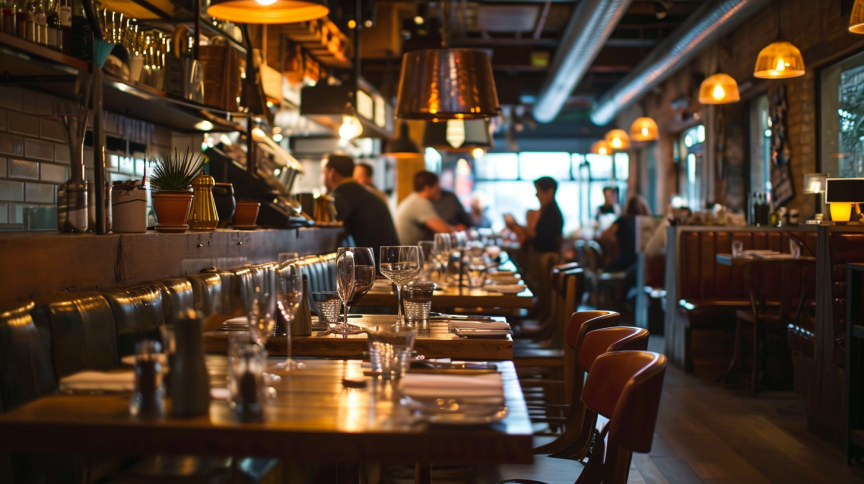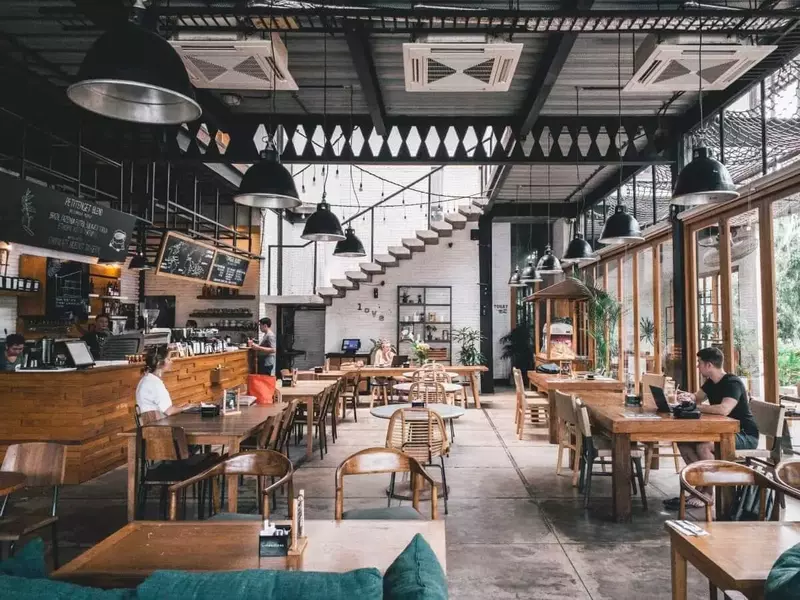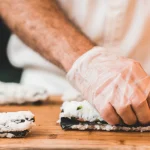The Role of Restaurant Interior Design in Attracting Customers
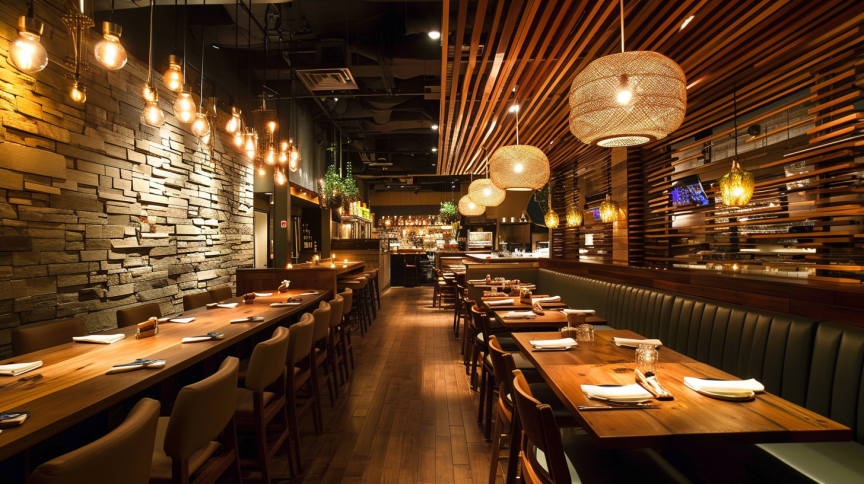
As a new restaurant owner, you’re likely aware of how important visual appeal is to guests. In many instances, how the food looks is just as important as how it tastes—depending on the specific customer, the appearance might be more important than the taste.
This sentiment goes beyond just your food. Your restaurant’s appearance and overall atmosphere are often elements that your customers appreciate as highly as the quality of your service. Moreover, studies have revealed that improving design features such as light and colours, for instance, directly increases customer satisfaction and, in turn, your restaurant’s revenue. Understanding the legal and financial considerations is essential when enhancing restaurant interior design to attract more guests and improve competitiveness.
Why is interior design important in a restaurant?
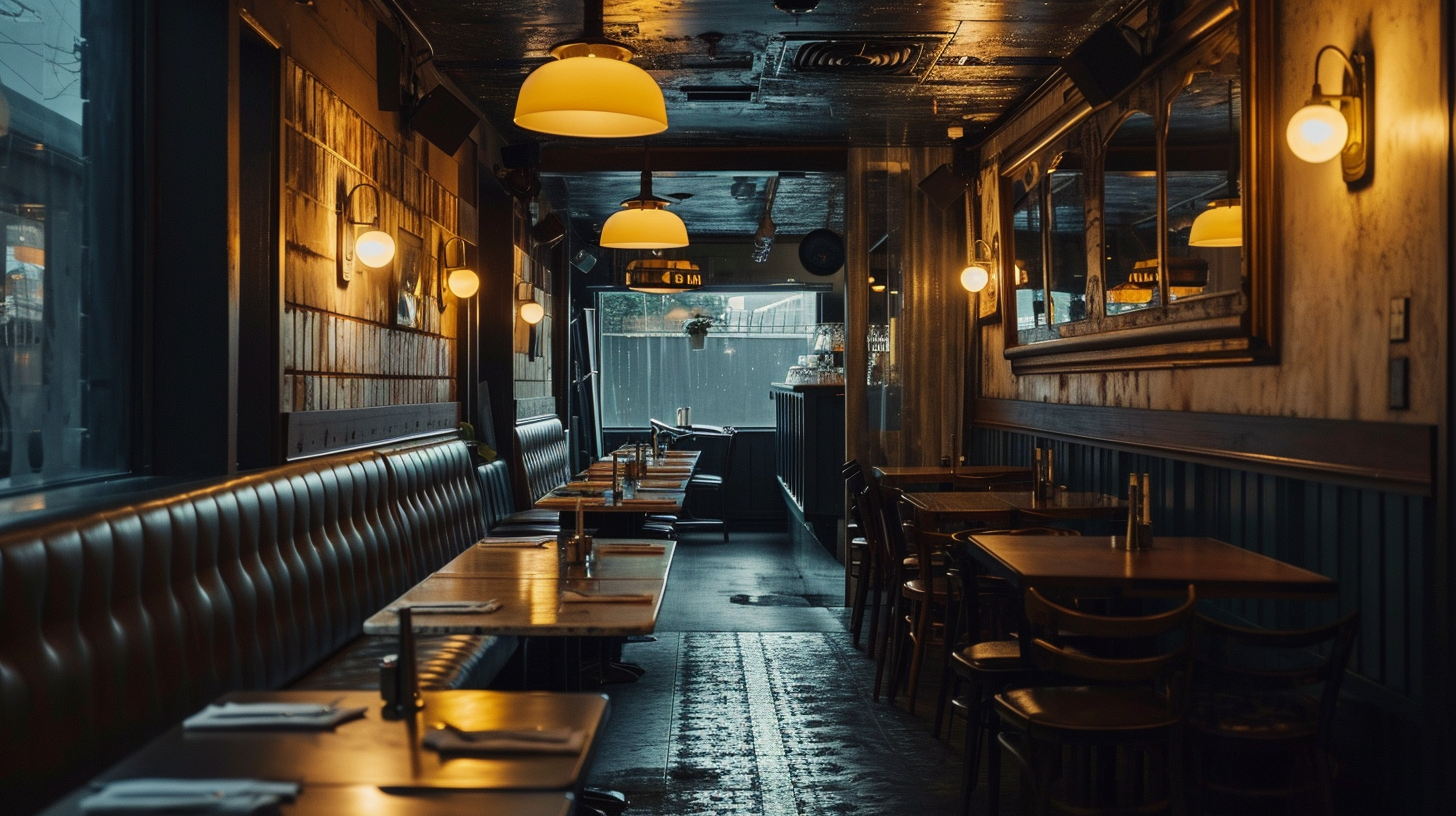
Restaurant interior design is all about making the right impression on your customers. Your decor, furniture, lighting, and other design elements make up your brand image and first attract guests to your new restaurant.
Interior design shapes your brand persona and significantly impacts your marketing, influencing how guests view your business. Moreover, it can influence your customers to return to your establishment and help you with word-of-mouth marketing.
What makes a good interior for a restaurant?
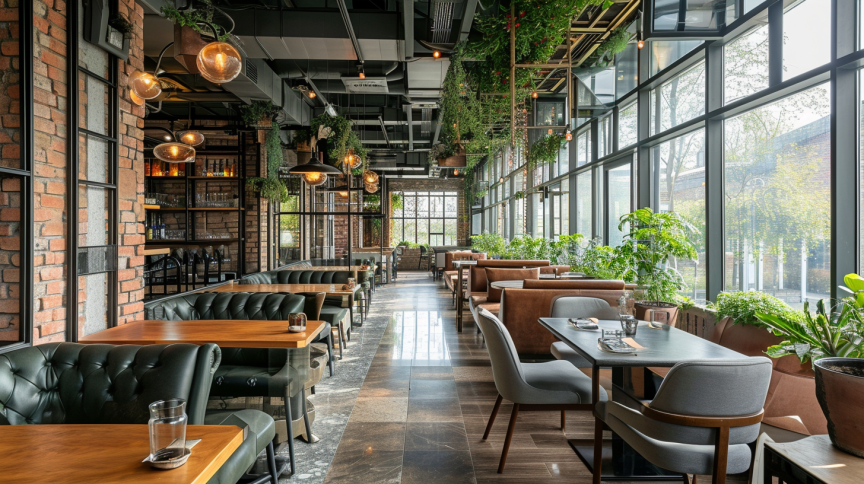
There are as many different interior design styles as there are restaurants in the world. For instance, you can create dark and moody interiors or bright rooms with plenty of art on the walls.
When evaluating a potential restaurant purchase, ensuring that the specific design complements your overall image and functionality is vital. That means creating a nice flow with a well-designed dining room layout and using comfortable yet appealing furniture.
As a general rule of thumb, creating a specific theme and building up your interior from there is a good idea.
What should be included in a restaurant design?

When designing the interior of your restaurant, cafe, bar, or other establishment types, you’ll need to consider several essential elements—colour, lighting, scents, and the seating arrangement. Look closely at each of them below.
Colour
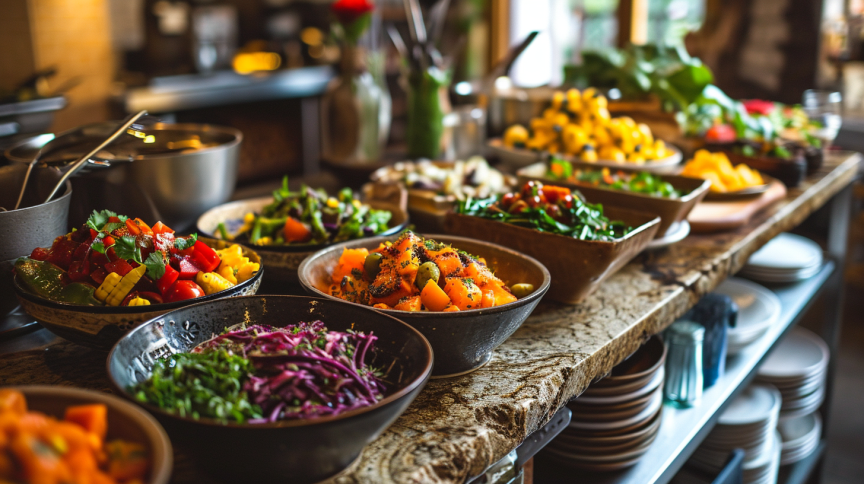
The colour in restaurants can have an immense impact on the thoughts and behaviours of guests. According to colour psychology, bright colours like red and orange can be energizing, helping increase a customer’s appetite, boost their mood, and encourage conversation. Many fast-food restaurants will use these colours to increase traffic and keep their guests coming and going faster.
On the other hand, colours like blue or purple are calming and can even suppress appetite. Generally, these colours are not associated with good food—quite the contrary. These colours can often be reminiscent of moulding food.
Of course, there are exceptions. A seafood restaurant, for instance, will often use hues of blue to indicate freshness.
It’s best to consult interior designers when choosing the colour scheme for your restaurant. They’ll help you select the right colours to create a pleasant atmosphere that aligns with your branding.
Lighting
You could get the colours just right, but it would all be for nothing if you don’t plan your lighting well.
Lighting doesn’t affect appetite as much as colours, but it can define your success. It affects every restaurant feature—from how the room feels and how the food looks to how the decor pieces blend.
It can even affect whether your guests want to stick around and eat at your establishment. After all, if the lighting is dim and they can’t even read the menu, they wouldn’t want to order any food regardless of its exquisite taste.
You’ll want to pay attention to three types of lighting: ambient, task, and accent lighting.
Ambient refers to the overall lighting in your restaurant—whether it’s bright and well-lit or dark and more cozy. Task lighting in restaurants is ideal for features like walkways or bars to make it easier for your team to perform specific tasks and deliver better service. Accent lighting is there just for the aesthetics, to highlight the beauty of any art pieces on the walls, perhaps, or to show off your logo.
Scents

You must also pay attention to the scents to create a truly perfect design for your restaurant. The smell is responsible for 80% of what your guests taste, so serving good food may only paint success if your restaurant has an appealing scent.
It should come as no surprise that some scents are more appetizing than others. The smell of freshly baked bread in your restaurant will attract more guests than the smell of cleaning and disinfecting chemicals. Also, foul odours of mould or spoiled food will deter any customer who walks through your doors.
Restaurants wanting to control the scents better must primarily invest in excellent ventilation and air conditioning. If your establishment has an open kitchen layout, you won’t have to worry much about the smells, as freshly prepared food will entice your guests. Alternatively, you can use diffusers or other artificial scents—just ensure they’re not overpowering and suffocating.
Seating Arrangements
The final piece of the puzzle is the seating arrangement in your restaurant alongside your choice of furniture.
The seating arrangement will immensely impact how comfortable your restaurant guests feel and how well your team can serve them. If all the furniture is tightly packed, your restaurant will feel crowded, even if you have just a customer or two. Also, if your establishment were packed, getting to every table efficiently and delivering the food would be challenging for your servers.
Alternatively, your restaurant would feel sterile and barren if it’s too open, with miles between each table.
As far as your choice of furniture goes, that depends entirely on how you want your guests to behave. Plush, comfortable chairs with enough room to sit back and relax will be inviting, encouraging your guests to spend more time at your restaurant and keep ordering. It’s the perfect choice for fine dining and semi-casual restaurants.
You could go for more unorthodox furniture if you’re running a casual or a fast-food establishment. You could pick out hairs that are just comfortable enough to keep your guests happy but not so cozy to have them spend hours on them. You could even go for swings, for instance.
What are the interior design trends for restaurants this year?
Restaurant interior design constantly changes, with trends quickly going in and out of style. The latest trends include natural or eco-friendly, rustic, and smart tech design.
Natural or Eco-Friendly Design
Restaurants with plenty of greenery, wooden elements, and soft lighting are all the rage. Many guests today prioritize sustainable restaurants and businesses with social responsibility, and you can use that to your advantage.
Include natural and eco-friendly elements in your design to create a calm, pleasant atmosphere and show each customer who walks through your doors that your establishment prioritizes sustainability.
Rustic Design
Rustic is similar to natural or eco-friendly design and has replaced the popular industrial design, highlighting natural beauty. It’s characterized by the use of natural elements like wood and stone that are made to look aged and rough. Restaurants can play around with the rustic design, going for a more cottage-like, coastal, or Tuscan style.
Smart Tech Design
Almost the complete opposite of rustic and natural designs, the smart tech design is about introducing new technology to restaurants. For instance, menus are displayed via QR codes, the lighting is bright and fun, and the furniture is minimalistic and modern. There are plenty of high-gloss, sleek surfaces and soft edges.
Factors to Consider Before Designing Your Restaurant
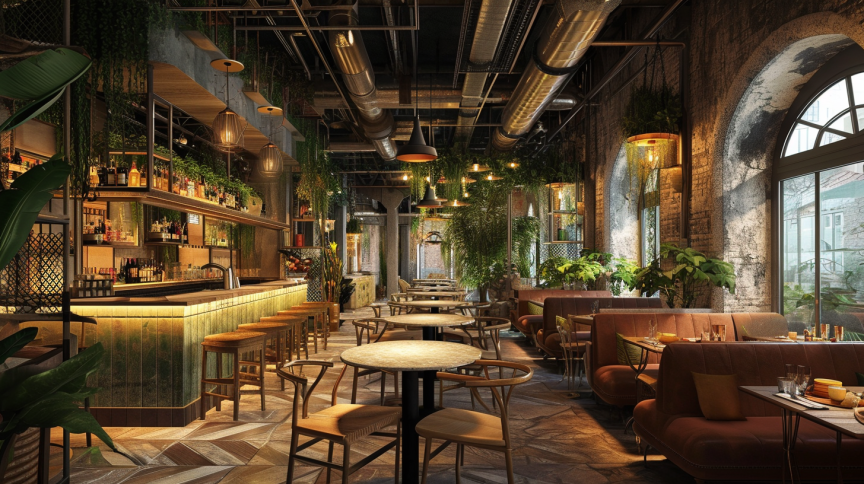
Before reimagining your restaurant’s interior design, you must consider several factors to ensure success—your budget, restaurant type, and available space.
Budget
Perfecting your design is an expensive endeavour. It could set you back thousands of dollars. So, before working on your design idea, ensure you have the budget to support it. If the money is tight, you could update your design with new wallpapers and plants to brighten things up.
Restaurant Type
Your choice of colours, lighting, seating, and other elements will depend heavily on your type of restaurant. For instance, fine dining establishments are famous for their soft ambient lighting, comfortable seating, and deeper, darker colours. Fast food places are often much brighter and more colourful.
Space
Of course, much of your interior will depend on your specific space. Whether you can play around with an open plan with a kitchen in the centre of your restaurant or use accent lights and darker tones depends heavily on how much room you have to experiment.
It’s always best to consult your team of designers before reimagining your restaurant.
FAQ
How does the restaurant interior affect word-of-mouth marketing?
With a stunning interior, your restaurant will inspire your guests to talk about it with their friends and family. Of course, it will also inspire them to take and share photos from your restaurant on social media, helping increase your reach and spread brand awareness.
How often should I change the appearance of my restaurant?
Trends in the restaurant industry change constantly, but that doesn’t mean that you always need to be on top of them. As long as the overall design matches your brand image and persona and creates a pleasant atmosphere, there’s no need to invest in expensive refurbishing.
What are some popular restaurant interior design trends?
Some popular restaurant interior design trends include luxe bathrooms, reimagined rattan, vertical slats, soft curves, metal accents, cement tiles, and more.
How can I create separate dining areas in my restaurant?
You can create separate dining areas in your restaurant by using decorative elements like foliage, sliding doors, and glass. Movable dividers can define each table/sitting area, even in smaller dining rooms, ensuring privacy for your guests.
What are some of the colours to avoid in restaurant design?
As a general rule of thumb, blue and purple are often considered the most unappetizing colours, so you should avoid them unless they’re prominent in your logo, for instance. Also, avoid excessively bright colours, such as neons, as they can stress your customers more.
Resources
https://www.scienceworld.ca/resource/taste-smell-connection/
https://todayshomeowner.com/blog/guides/restaurant-interior-design/
https://www.renoassistance.ca/en/commercial-renovation-construction/restaurant-design-trends/
https://www.touchbistro.com/blog/restaurant-interior-design-ideas/


